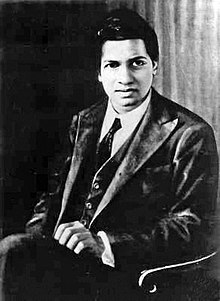During his short life, Ramanujan independently compiled nearly 3,900 results (mostly identities and equations).[2] Many were completely novel; his original and highly unconventional results, such as the Ramanujan prime, the Ramanujan theta function, partition formulae, and mock theta functions, have opened entire new areas of work and inspired a vast amount of further research.[3] Nearly all his claims have now been proven correct.[4] The Ramanujan Journal, a peer-reviewed scientific journal, was established to publish work in all areas of mathematics influenced by Ramanujan,[5] and his notebooks - containing summaries of his published and unpublished results - have been analyzed and studied for decades since his death as a source of new mathematical ideas. As late as 2011 and again in 2012, researchers continued to discover that mere comments in his writings about "simple properties" and "similar outputs" for certain findings were themselves profound and subtle number theory results that remained unsuspected until nearly a century after his death and which relied on work published in 2006.[6][7] He became one of the youngest Fellows of the Royal Society and only the second Indian member, and the first Indian to be elected a Fellow of Trinity College, Cambridge. Of his original letters, Hardy stated that a 'single look' was enough to show they could only have been written by a mathematician of the highest calibre, comparing Ramanujan to other mathematical geniuses such as Euler and Jacobi.
In 1919, ill health – now believed to have been hepatic amoebiasis (a complication from episodes of dysentery many years previously) – compelled Ramanujan's return to India, where he died in 1920 at the age of 32. His last letters to Hardy, written January 1920, show that he was still continuing to produce new mathematical ideas and theorems. His "lost notebook", containing discoveries from the last year of his life, caused great excitement among mathematicians when it was rediscovered in 1976.

No comments:
Post a Comment